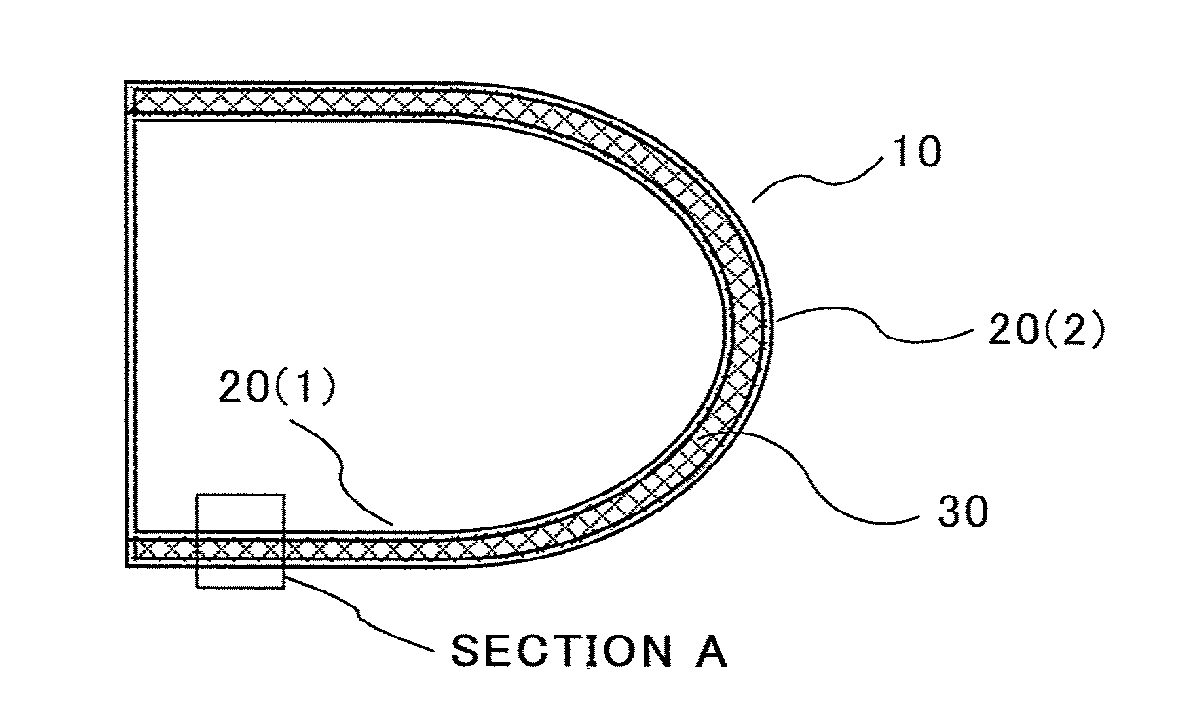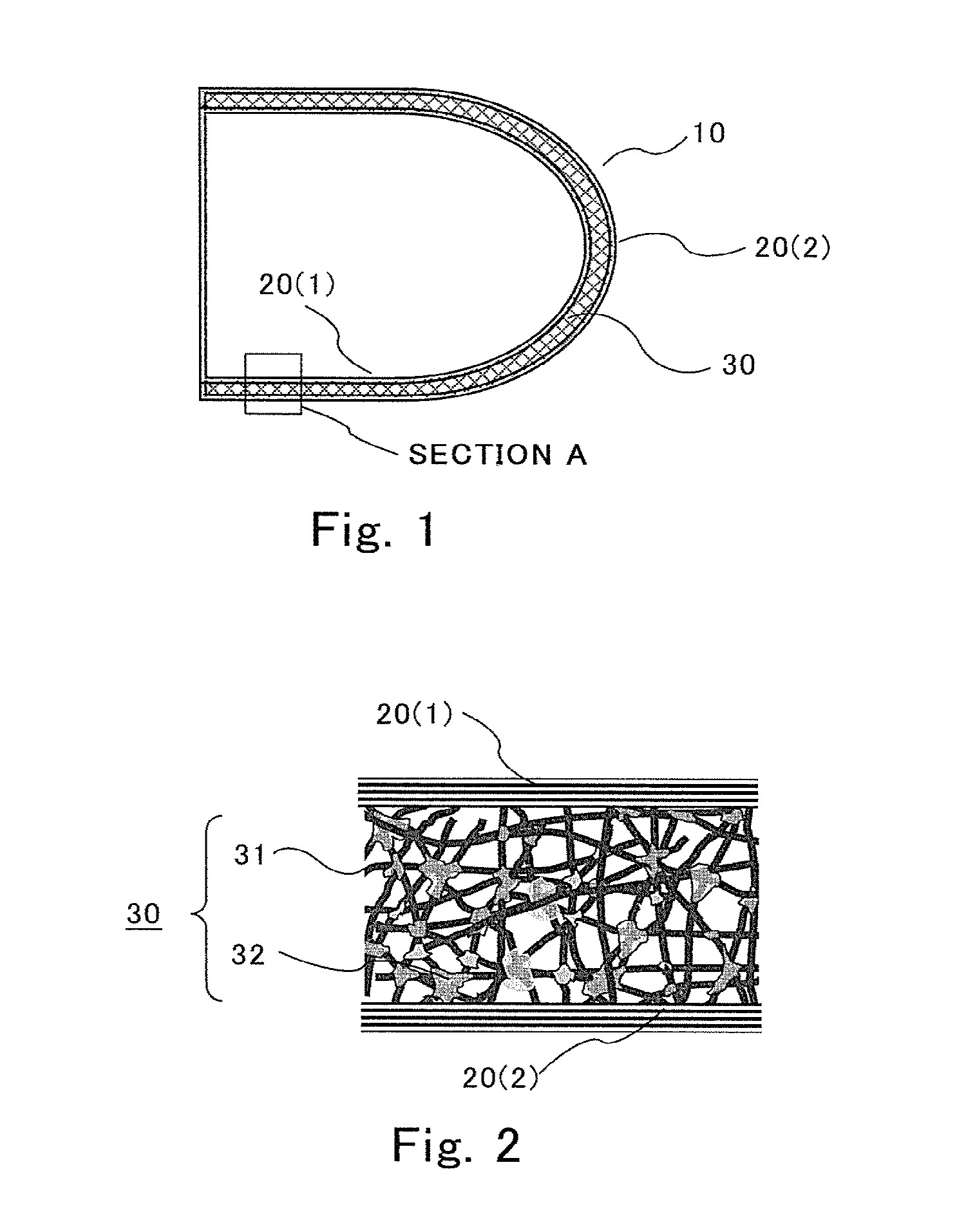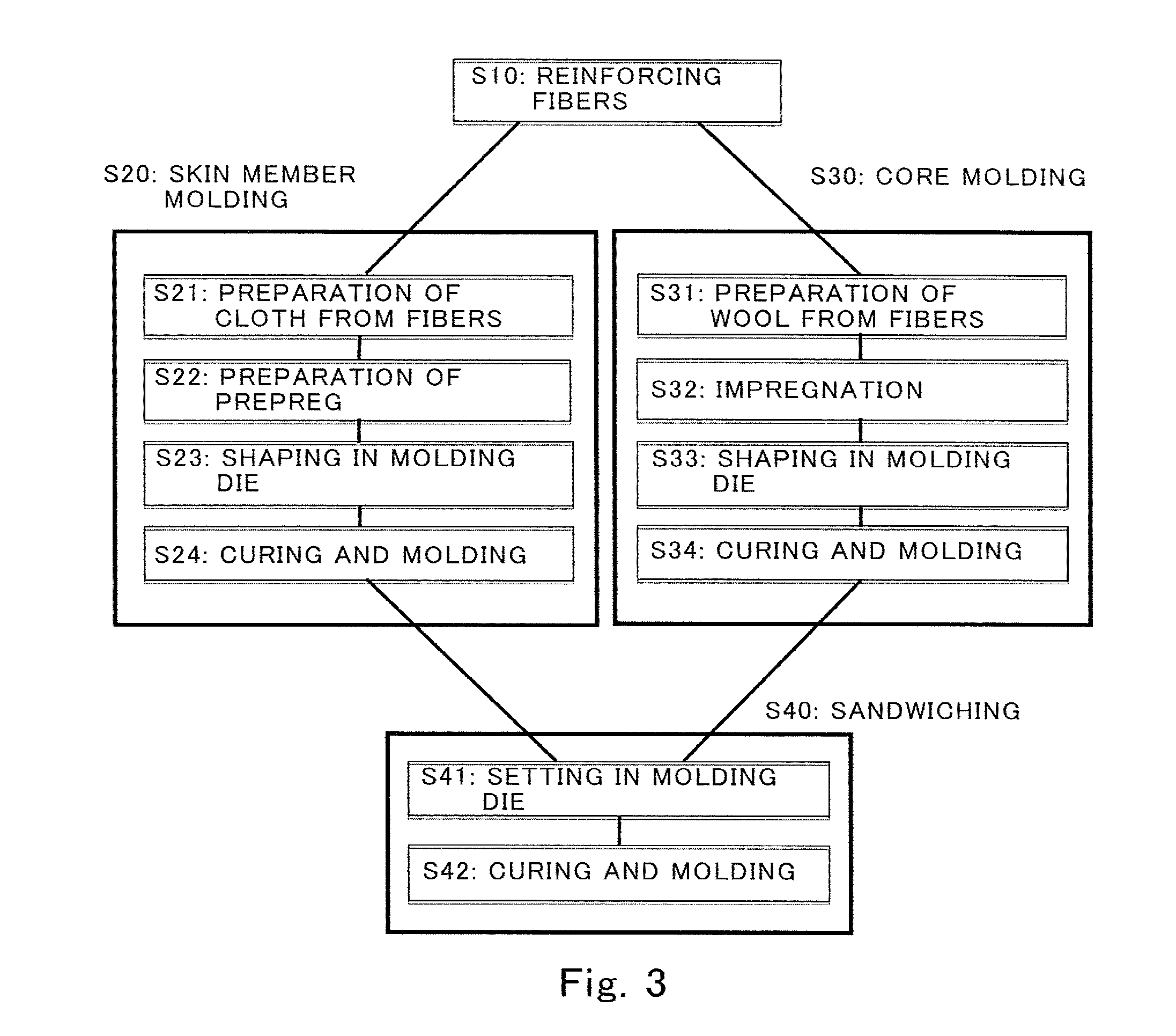Flight vehicle radome and method for producing flight vehicle radome
a technology for flight vehicles and radome, which is applied in the direction of antenna adaptation in movable bodies, other domestic articles, radiating element housings, etc., can solve the problems of difficult to obtain sufficient strength and stiffness in the core of polyimide resins, heavy ceramic materials, impact-vulnerable, etc., and achieves superior mechanical characteristics, excellent transmissivity to radio waves and structural strength, and does not break easily
- Summary
- Abstract
- Description
- Claims
- Application Information
AI Technical Summary
Benefits of technology
Problems solved by technology
Method used
Image
Examples
embodiment 1
[0030]FIG. 1 is a cross-sectional diagram illustrating a sandwich structure of a radome in Embodiment 1 of the present invention. A radome 10 of the present Embodiment 1 is made up of skin members 20 (1), 20 (2) and a core member 30.
[0031]FIG. 2 is an enlarged-view diagram of a partial cross-section of the sandwich structure of the radome of Embodiment 1 of the present invention. More specifically, the partial cross-sectional diagram illustrated in FIG. 2 corresponds to an enlarged diagram of “section A” in FIG. 1.
[0032]The core member 30 has a structure wherein portions at which reinforcing fibers 31 intersect each other are bonded by a polyimide resin 32. The core member 30 in the present Embodiment 1 is thus is a low-density molded body provided with the reinforcing fibers 31 and the polyimide resin 32. In terms of volume ratio, preferably, the volume content ratio of the reinforcing fibers 31 ranges from 3% to 10% and the volume content ratio of the resin is 20% or lower, the co...
embodiment 2
[0054]In Embodiment 2 a production process of the radome of the present invention explained in Embodiment 1 above will be described next with reference to accompanying drawings. FIG. 3 is a flowchart relating to the production process of the radome in Embodiment 2 of the present invention.
[0055]The flowchart illustrated in FIG. 3 includes roughly the following four steps below.
[0056]S10: step of preparing reinforcing fibers that are used in the skin members 20 and the core member 30.
[0057]S20: flow of molding of the skin members 20, made up of four steps S21 to S24.
[0058]S30: flow of molding of the core member 30, made up of four steps S31 to S34.
[0059]S40: flow of sandwiching of the skin members 20 and the core member 30, made up of two steps S41 and S42.
[0060]In step S10, firstly, there are prepared reinforcing fibers (corresponding to the reinforcing fibers 31 and the cloth 21) that are used in the molding flow S20 of the skin members 20 and in the molding flow S30 of the core me...
PUM
| Property | Measurement | Unit |
|---|---|---|
| Temperature | aaaaa | aaaaa |
| Length | aaaaa | aaaaa |
| Fraction | aaaaa | aaaaa |
Abstract
Description
Claims
Application Information
 Login to View More
Login to View More - R&D
- Intellectual Property
- Life Sciences
- Materials
- Tech Scout
- Unparalleled Data Quality
- Higher Quality Content
- 60% Fewer Hallucinations
Browse by: Latest US Patents, China's latest patents, Technical Efficacy Thesaurus, Application Domain, Technology Topic, Popular Technical Reports.
© 2025 PatSnap. All rights reserved.Legal|Privacy policy|Modern Slavery Act Transparency Statement|Sitemap|About US| Contact US: help@patsnap.com



